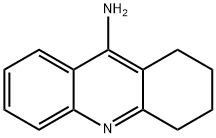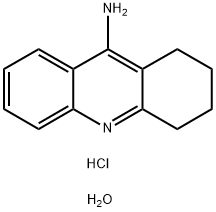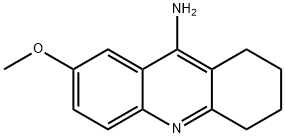1,2,3,4-Tetrahydroacridin-9-amine , 98% , 321-64-2
CAS NO.:321-64-2
Empirical Formula: C13H14N2
Molecular Weight: 198.26
MDL number: MFCD00046923
EINECS: 206-291-2
| Pack Size | Price | Stock | Quantity |
| 1g | RMB132.00 | In Stock |
|
| 5g | RMB434.40 | In Stock |
|
| 25g | RMB1943.20 | In Stock |
|
| others | Enquire |
PRODUCT Properties
| Melting point: | 183.5℃ |
| Boiling point: | 325.59°C (rough estimate) |
| Density | 0.9827 (rough estimate) |
| refractive index | 1.4400 (estimate) |
| storage temp. | 4°C, away from moisture and light |
| solubility | DMSO (Slightly), Methanol (Slightly) |
| form | Solid |
| pka | 9?+-.0.20(Predicted) |
| color | White to Pale Yellow |
| CAS DataBase Reference | 321-64-2(CAS DataBase Reference) |
Description and Uses
In the 1950s, tacrine was used experimentally to reverse cholinergic coma in animals. In the 1960s, tacrine was used to reverse the effects of phencyclidine-like drugs. It was also marketed for many years as a respiratory stimulant. In 1993, the US Food and Drug Administration approved tacrine for the treatment of symptoms of mild to moderate Alzheimer’s disease.
The current use of tacrine is limited due to its poor oral bioavailability, the necessity for four daily doses, and serious side effects (including nausea, vomiting, dry mouth, indigestion, diarrhea, loss of appetite, urinary incontinence, collapse, convulsions, and hepatotoxicity). Currently, newer cholinesterase inhibitors (such as donepezil, rivastigmine, and galantamine) are preferred over tacrine.
Safety
| Symbol(GHS) |  GHS06 |
| Signal word | Danger |
| Hazard statements | H301+H311+H331-H315-H319 |
| Precautionary statements | P501-P261-P270-P271-P264-P280-P337+P313-P305+P351+P338-P361+P364-P332+P313-P301+P310+P330-P302+P352+P312-P304+P340+P311-P403+P233-P405 |




